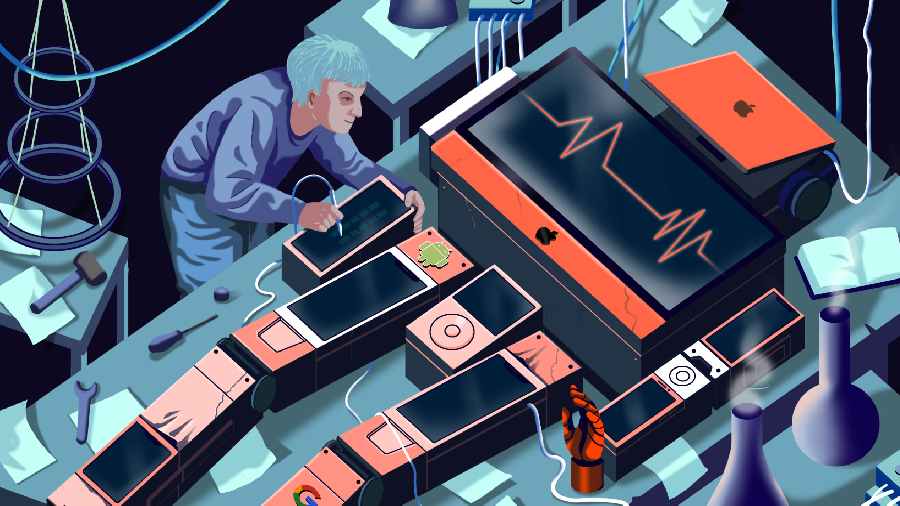First we buy a gadget. For the next few years, the manufacturer releases software updates that fix bugs. One day, those updates stop coming. According to conventional wisdom, that is the time to buy a new device.
But the truth is, upgrades needn’t be so automatic. We can often delay them if we follow some best security practices and take control of our personal tech. After all, it is unrealistic for everyone to upgrade on a tech company’s schedule — some devices, including expensive Android phones, cease getting software updates after only two years.
At the same time, we don’t want to hold on to our gadgets so long that they become vulnerable to bugs, cyberattacks, etc. Software upgrades are typically necessary for those reasons.
“We have to ride the line between what the reality is for a lot of people and recognising that everybody has to engage in the digital world,” said Hilary Shohoney, executive director of Free Geek, a non-profit that repurposes outdated machines. “It’s not a fair thing to say you need the best computer to get the best security.”
So how do we walk that line? There are some ways to keep your devices running safely even when the manufacturer stops providing software updates. Here is what you need to know.
Follow best practices
On computers, lots of what we do, from homework to editing spreadsheets, happens through a web browser. On phones, we heavily rely on both the web and apps.
So staying safe online without direct help from a manufacturer largely involves taking steps for browsing the web and using apps.
• Keep your browser up to date. This will offer some protection from malicious websites. Trustworthy browser companies like Mozilla, the maker of Firefox, update their apps to work on computers that are more than 10 years old.
• Don’t open messages or click on links from unknown senders and use only apps offered by trusted brands, said Sinan Eren of Barracuda Networks, a security firm.
• Be on the lookout for shady apps. Android devices are more susceptible to malware than Apple phones partly because they can be set up to instal apps from unauthorised app stores. In addition, many manufacturers stop supporting Android devices after only two years. Owners of outdated Android devices can add a layer of protection by installing a malware-scanning app from brands like Malwarebytes, NortonLifeLock and Lookout.
• Secure your online accounts. Even if your device’s software is outdated, setting up your online accounts with two-factor authentication can help prevent inappropriate access to your account in the event that your password is stolen.
Doing these will reduce risk, but won’t eliminate it. Dan Guido, CEO of Trail of Bits, an Internet security firm, said outdated devices remained wide open for attackers to exploit because of known vulnerabilities in old software.
Instal a different OS
There are more that can keep a device functional and secure past its supported life. One involves replacing the manufacturer’s software system with an alternative.
Shohoney’s non-profit, Free Geek, based in Portland, Oregon, US, revives old PCs by installing a copy of Linux, the open-source OS known for robust security.
Installing a different OS requires some technical know-how, but myriad tutorials online offer instructions.
Smartphone owners have fewer options. For Android, LineageOS, an open-source mobile operating system, has received positive reviews for its robust security.
Outdated Apple mobile devices, however, can’t be easily modified to instal an alternate OS. In fact, experts recommend against “jailbreaking” because it can weaken the Apple device’s security.
Repurpose old device
We can also take steps with our hardware, like replacing an ageing battery. But when the cost, effort and risk add up and make resuscitating a device impractical, upgrading is your best bet.
That doesn’t mean we have to haul our devices to a recycling centre. By turning off an outdated iPad’s Internet connection, for instance, you can safely use it for light tasks like playing music or jotting down recipes, said Kyle Wiens, CEO of iFixit, a US company that offers tools and instructions on repairing tech products.
NYTNS











